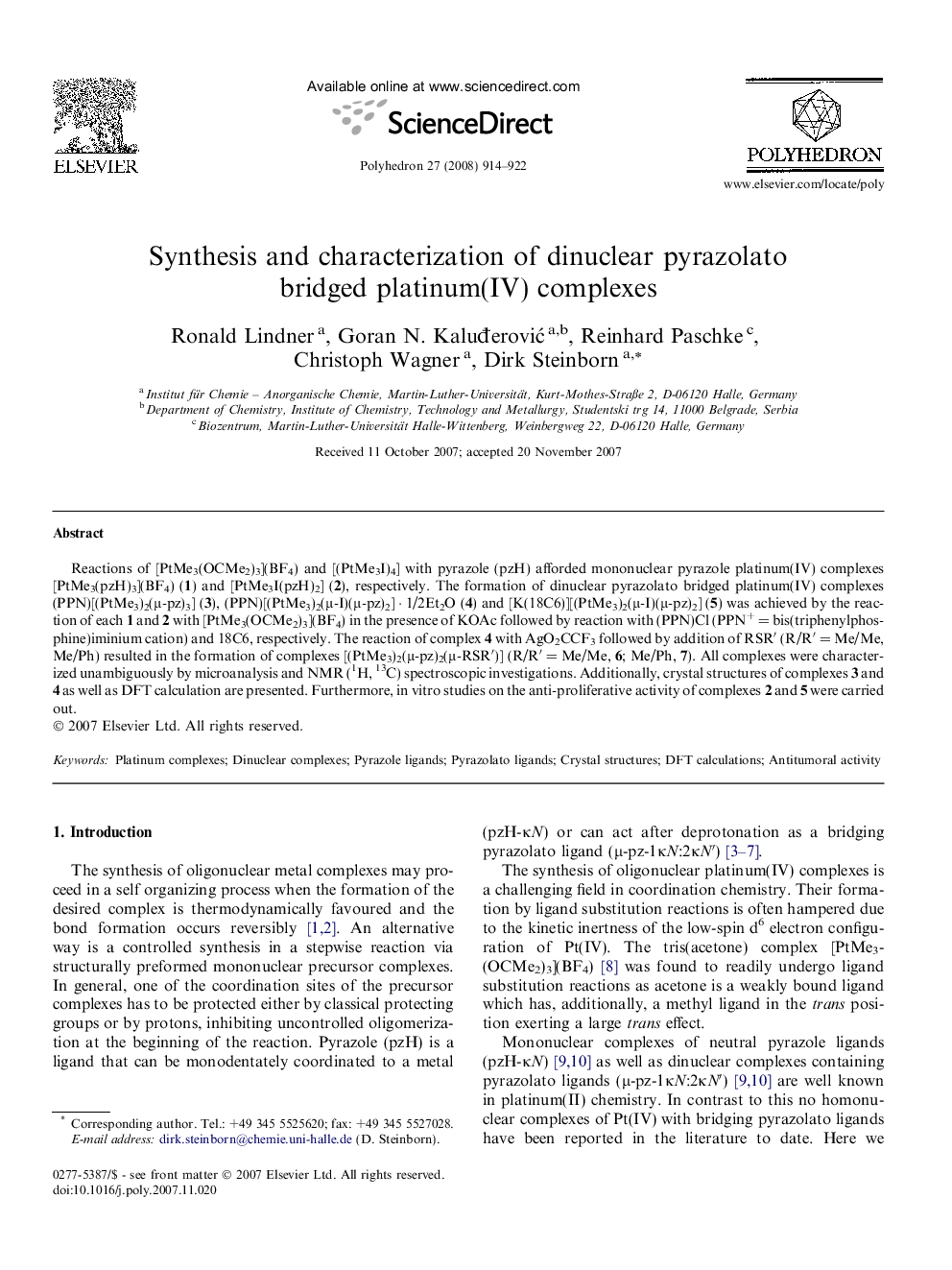| Article ID | Journal | Published Year | Pages | File Type |
|---|---|---|---|---|
| 1340702 | Polyhedron | 2008 | 9 Pages |
Reactions of [PtMe3(OCMe2)3](BF4) and [(PtMe3I)4] with pyrazole (pzH) afforded mononuclear pyrazole platinum(IV) complexes [PtMe3(pzH)3](BF4) (1) and [PtMe3I(pzH)2] (2), respectively. The formation of dinuclear pyrazolato bridged platinum(IV) complexes (PPN)[(PtMe3)2(μ-pz)3] (3), (PPN)[(PtMe3)2(μ-I)(μ-pz)2] · 1/2Et2O (4) and [K(18C6)][(PtMe3)2(μ-I)(μ-pz)2] (5) was achieved by the reaction of each 1 and 2 with [PtMe3(OCMe2)3](BF4) in the presence of KOAc followed by reaction with (PPN)Cl (PPN+ = bis(triphenylphosphine)iminium cation) and 18C6, respectively. The reaction of complex 4 with AgO2CCF3 followed by addition of RSR′ (R/R′ = Me/Me, Me/Ph) resulted in the formation of complexes [(PtMe3)2(μ-pz)2(μ-RSR′)] (R/R′ = Me/Me, 6; Me/Ph, 7). All complexes were characterized unambiguously by microanalysis and NMR (1H, 13C) spectroscopic investigations. Additionally, crystal structures of complexes 3 and 4 as well as DFT calculation are presented. Furthermore, in vitro studies on the anti-proliferative activity of complexes 2 and 5 were carried out.
Graphical abstractDinuclear pyrazolato-bridged platinum(IV) complexes (PPN)[(PtMe3)2(μ-pz)3] (3) and (PPN)[(PtMe3)2(μ-I)(μ-pz)2] · 1/2Et2O (4) were prepared from the mononuclear pyrazole complexes [PtMe3(pzH)3] (1) and [PtMe3I(pzH)2] (2), respectively, by controlled deprotonation. NMR measurements, structural investigations and quantum chemical calculations gave insight into the bonding of bridging pyrazolato and iodo ligands in platinum(IV) complexes.Figure optionsDownload full-size imageDownload as PowerPoint slide
